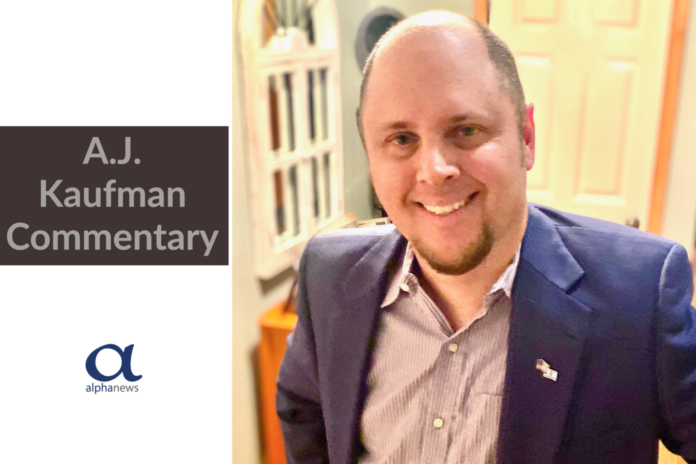It’s mid-July; Major League Baseball resumes in 12 days; and election season is heating up. Meanwhile, schools have been closed more than four long months, with our tax dollars wasting away as expensive buildings sit idle.
Many public schools in Florida, the Midwest and South open in about four weeks. Here in Minnesota? Not so much. In Los Angeles, with a powerful, corrupt union? No way.
Despite media obfuscating data to focus on cases, death and hospitalizations rates from COVID-19 have spiraled downward for over a month. We must get kids off the streets; they’re bored and causing mayhem and violence around major cities.
Colleges like Notre Dame, Rice and Virginia wisely welcome students back in August, while places with 11-figure endowments like Harvard and USC cowardly close their doors.
As students and parents re-evaluate the dwindling value of a college diploma, they’re also filing class action lawsuits against universities, demanding rebates for skyrocketing tuition, since they’ve been unable to receive in-person learning. There is no way universities can maintain current tuition rates when the student experience and instructional caliber is limited.
Paying $60,000 to take classes from home via Zoom is profligate. Perhaps it was a necessity, but remote learning was overall a failure. Many teachers simply mailed it in and didn’t work.
Seven weeks ago I explained why we must reopen schools. The president agrees; the First Lady agrees; most parents agree; the CDC Director agrees; the education secretary agrees; honest media agree; the American Academy of Pediatrics, which recently issued detailed guidelines for re-entering, concurs.
My cousin in Ohio has a daughter entering 5th grade. She argues the last few months “don’t come close to in-person learning.”
“My daughter wasn’t invested in digital learning and had difficulty staying engaged,” she said. “The lack of social interaction with her teachers and classmates was apparent. This experience solidified my belief in the value of in-person learning, and I hope students are able to return to school full time. The risk is worth what they gain.”
Of our 133,000 COVID-19 deaths, only a few dozen children have died and barely 2% of U.S. cases occur among people under 18. A condition like COVID, which isn’t commonly fatal, doesn’t justify keeping nearly 60 million American students home any longer, especially since afflicted youths recover quickly. It’s true that coronavirus may be the first pandemic in history not to affect children. Being home long term, however, has serious consequences.
Aside from overburdening parents, closures have ruinous impacts on children. These include child abuse surges, anxiety, depression and isolation. Students with autism, Down syndrome, ADHD and other special needs are at particular risk.
As a former teacher, I can confirm that students’ lives at school go beyond the textbooks; they learn social skills, receive healthy meals, exercise and more.
Keeping schools closed also exacerbates the so-called “achievement gap,“ advantaging wealthier parents with resources to work remotely and help participate in distance learning. Still, parents are less productive at work when they’re moonlighting as teachers.
Too much learning has already been lost because of the abrupt school shutdown in March. Our students, already behind most other countries, have lost ground, and racial and economic gaps have widened. We’ll be playing catch-up for years. Let’s heed data and reopen. We owe it to our children.
While many countries shuttered schools, others, such as Taiwan, achieved effective responses without closures.
In Austria, Germany, Scandinavia and elsewhere where schools reopened months ago, COVID-19 cases and deaths decreased. Self-described liberals regularly point to other countries’ successes to criticize America — why not now?
Don’t ask strident teachers’ unions; they want more “funding” and make onerous demands. So long as the paychecks don’t stop, the status quo is fine, and they’ll encourage members to resist doing their jobs. Unions are concerned about political clout, not children, single parents or the economy.
Purdue University President Mitch Daniels, who recently said “Failure to take on the job of reopening would be not only anti-scientific but also an unacceptable breach of duty,” understands the importance of students returning to campus.
Led by scientists and medical experts, the former successful governor got innovative. Purdue, which hasn’t raised tuition in a decade, changed how they house and feed students, while making campus less dense. Staff applied what they learned about social distancing to redesign classrooms and dormitory rooms to lower occupancy.
In a few weeks — after a full summer off — we’ll have given educrats five long months to find a way to reopen safely. All it takes is creativity and listening to pediatricians or assorted experts. Store owners, social workers, accountants, mechanics and every other profession sacrifice for the common good day after day. Will teachers? Lives depend on it.
Related: 2018 Minnesota Republican Attorney General Nominee Doug Wardlow spoke at a rally to open MN Schools in the fall
2018 candidate for Attorney General @doug_wardlow who ran against Keith Ellison, spoke to the issue of opening schools in the state.
Earlier he and other speakers addressed the crowd of teachers, parents & their kids at the Rally to Reopen Minnesota Schools today. pic.twitter.com/BxY95dzsDE
— Alpha News MN (@AlphaNewsMN) July 11, 2020
A.J. Kaufman
A.J. Kaufman is an Alpha News columnist. His work has appeared in the Baltimore Sun, Florida Sun-Sentinel, Indianapolis Star, Israel National News, Orange County Register, St. Cloud Times, Star-Tribune, and across AIM Media Midwest and the Internet. Kaufman previously worked as a school teacher and military historian.

















